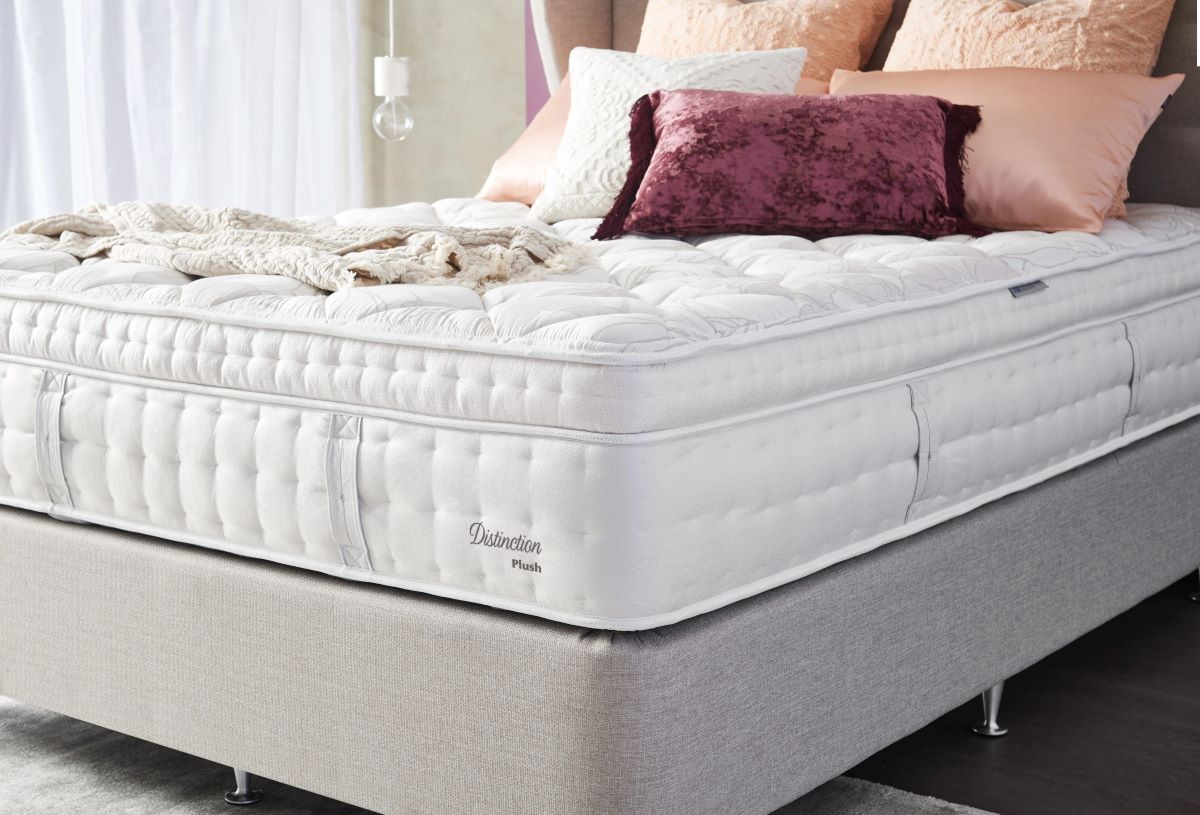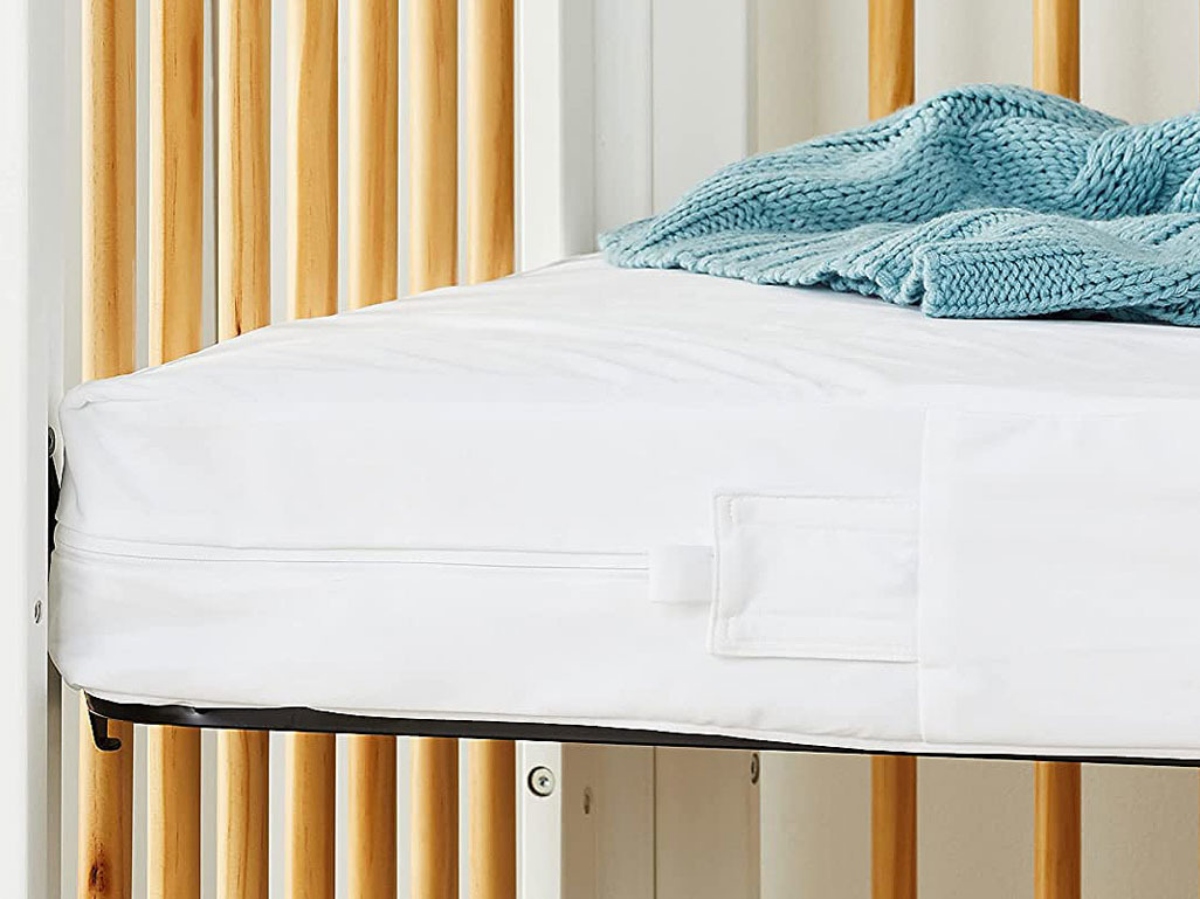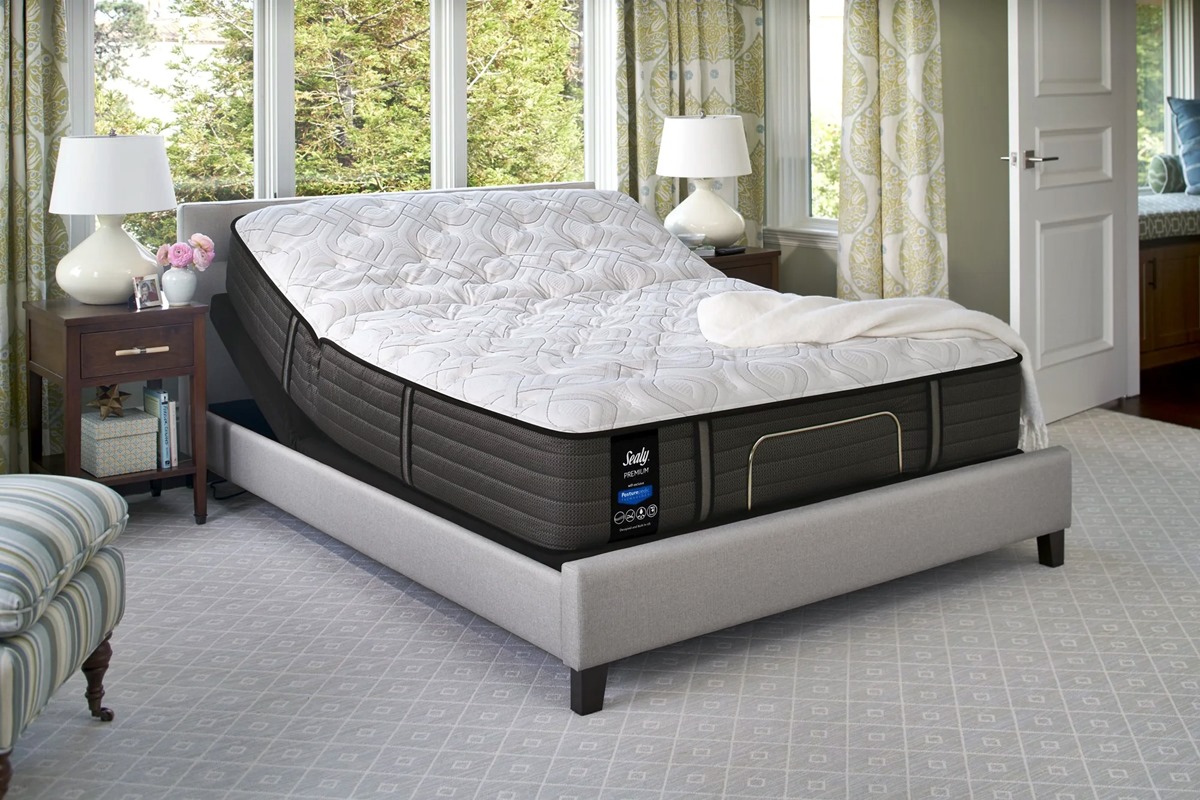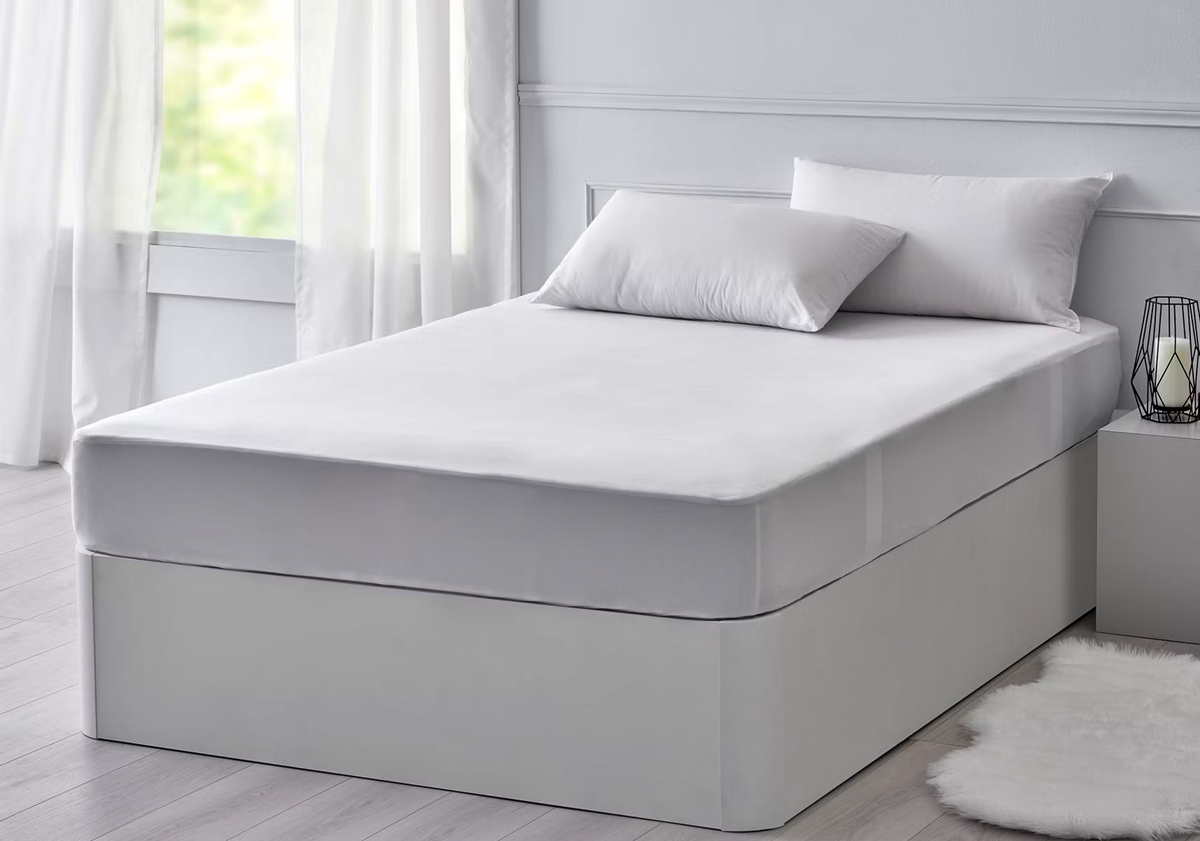Home>Furniture>Bedroom Furniture>How Firm Of A Mattress Do I Need
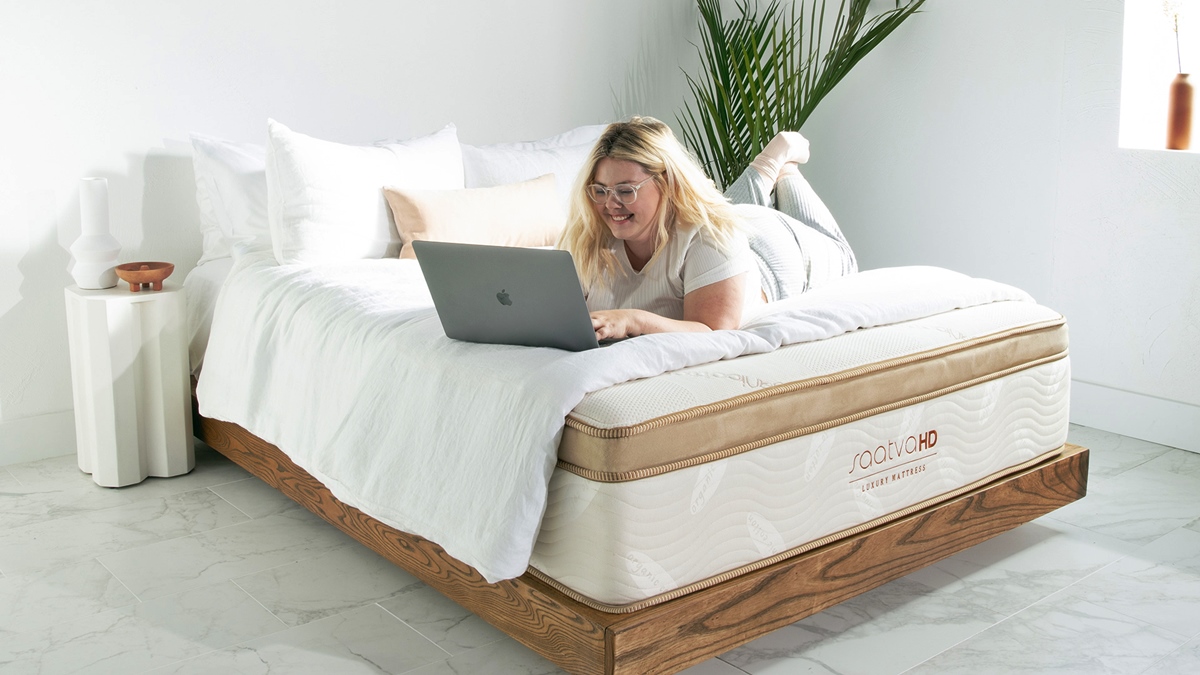

Bedroom Furniture
How Firm Of A Mattress Do I Need
Modified: January 24, 2024
Find the perfect bedroom furniture with our guide on how to determine the firmness of a mattress. Make sure you choose the right level of support for a restful sleep.
(Many of the links in this article redirect to a specific reviewed product. Your purchase of these products through affiliate links helps to generate commission for Storables.com, at no extra cost. Learn more)
Introduction
When it comes to getting a good night’s sleep, the firmness of your mattress plays a crucial role. The right level of mattress firmness can provide proper support for your body and help alleviate back pain, promote spinal alignment, and prevent discomfort while sleeping. However, determining the ideal firmness for your mattress can be challenging, as it varies depending on factors such as sleeping position, body weight, personal preference, and even health conditions.
In this article, we will delve into the factors that you should consider when determining how firm of a mattress you need. We will explore the different mattress firmness levels and provide guidance on finding the right one for your needs.
So, if you’re ready to enhance your sleep experience and wake up feeling refreshed and rejuvenated, read on to discover how to choose the perfect firmness for your mattress.
Key Takeaways:
- Choose the right mattress firmness based on your sleeping position, body weight, personal preference, and health conditions to ensure proper spinal alignment and minimize pressure points for a restful sleep.
- Test different mattresses, prioritize comfort, and take advantage of trial periods to find the perfect firmness level that promotes relaxation, rejuvenation, and overall well-being for a good night’s sleep.
Read more: What Firmness Mattress Do I Need
Factors to Consider
When determining the firmness level of your mattress, there are several factors to take into consideration. Understanding these factors will help you make an informed decision and ensure that you select a mattress that best suits your individual needs.
Sleeping Position: Your sleeping position is a key factor in determining the firmness level you require. Different sleeping positions require different levels of support. For example, side sleepers generally benefit from a softer mattress that contours to their body, while back and stomach sleepers tend to prefer a firmer mattress that offers more support.
Body Weight: Your body weight also plays a role in determining the right level of firmness for your mattress. Heavier individuals often require a firmer mattress to provide adequate support and prevent sinking too deeply into the mattress. Lighter individuals, on the other hand, may find a softer mattress provides the right level of comfort and support.
Personal Preference: Personal preference is undoubtedly a significant factor in choosing the firmness level of your mattress. Some individuals prefer the feeling of sleeping on a cloud-like soft mattress, while others enjoy the support and stability of a firmer mattress. Consider what feels most comfortable to you and aligns with your sleeping habits and preferences.
Health Conditions: Certain health conditions can affect the firmness level you require. For example, individuals with chronic back pain may benefit from a medium-firm mattress that provides a balance of support and comfort. It’s important to consult with your healthcare provider if you have any specific health concerns that might influence your mattress choice.
By carefully considering these factors, you’ll be better equipped to determine how firm your mattress should be. Keep in mind that finding the right firmness level is a personal journey, and what works for someone else may not work for you. It’s crucial to try out different mattress types and firmness levels to find the perfect fit for your individual needs and preferences.
Sleeping Position
Your sleeping position plays a vital role in determining the ideal firmness level for your mattress. Different sleeping positions require varying levels of support to maintain proper spinal alignment and promote a restful night’s sleep.
Side Sleepers: If you’re a side sleeper, you’ll want a mattress with a softer firmness level that provides excellent pressure relief for your hips and shoulders. A mattress that contours to your body’s curves and cushions these areas will help prevent discomfort and promote a more comfortable sleep posture.
Back Sleepers: Back sleepers typically benefit from a medium firmness level that offers a balance between support and comfort. This firmness level helps distribute weight evenly and maintains proper spinal alignment, reducing the risk of waking up with aches and pains. A mattress that supports the natural curves of the back will help keep the spine aligned throughout the night.
Stomach Sleepers: Stomach sleepers usually require a firmer mattress to prevent the midsection from sinking too deeply into the mattress and causing the spine to bow unnaturally. A mattress with a medium to firm firmness level provides the necessary support to keep the body properly aligned, promoting better breathing and reducing the risk of strain on the neck and back.
While the abovementioned guidelines can help steer you in the right direction, it’s important to note that individual preferences can vary. Some side sleepers may prefer a slightly firmer mattress, while back sleepers may find a softer mattress more comfortable. Ultimately, it’s crucial to try out different firmness levels and listen to your body to find the best fit for your specific sleeping position.
Now that we’ve explored the impact of sleeping position on mattress firmness, let’s move on to the next factor: body weight.
Body Weight
When it comes to selecting the right firmness level for your mattress, your body weight is an essential consideration. Your body weight can impact how deeply you sink into the mattress and how well it supports your body’s contours. Finding the right balance of comfort and support is crucial for a good night’s sleep, regardless of your weight.
Lightweight Individuals: If you have a lighter body weight, you may find that a softer mattress provides the necessary comfort and support for a restful sleep. A softer mattress can help alleviate pressure points and provide a cozy sleep surface. However, it’s essential to balance softness with adequate support to prevent sagging and maintain proper spinal alignment.
Average Weight Individuals: For individuals with an average body weight, the range of firmness levels available opens up more possibilities. Most individuals in this category opt for a medium firmness level, as it provides a balance between support and comfort. This firmness level can help maintain spinal alignment and alleviate pressure points, promoting a more restful sleep experience.
Heavier Individuals: If you have a heavier body weight, a firmer mattress is generally recommended. A firmer mattress provides more support and prevents excessive sinking, which can lead to discomfort and disrupt sleep. A mattress with a firm or even extra-firm firmness level can help ensure proper spinal alignment and support for individuals with a higher body weight.
It’s important to note that these are general guidelines and may vary based on individual preferences and sleeping position. Additionally, factors such as body composition and distribution of weight can also influence the ideal firmness level for your mattress. Consider your body weight and how it relates to the recommended firmness levels as a starting point, but always prioritize what feels most comfortable and supportive for your unique needs.
Now that we’ve explored the impact of body weight on mattress firmness, let’s move on to the next factor: personal preference.
Personal Preference
When it comes to choosing the firmness level of your mattress, personal preference is a key factor. There is no “one size fits all” solution, as everyone has different preferences and comfort levels. Understanding your own personal preferences can help guide you towards the right firmness level for your mattress.
Some individuals prefer the feeling of sleeping on a cloud-like surface that gently cradles their body. They may enjoy the contouring and plushness of a softer mattress. These individuals often prioritize comfort over support and prefer a plush or medium-soft firmness level.
On the other hand, some individuals prefer a firmer and more supportive sleep surface. They enjoy the feeling of sleeping “on top” of the mattress rather than sinking into it. They prioritize support and proper spinal alignment over plushness and may opt for a medium-firm to firm mattress.
It’s also important to consider your sleeping habits and patterns. Do you tend to move around a lot during the night or prefer to stay in one position? Do you have any specific comfort preferences, such as needing extra cushioning for pressure points or a cooler sleep surface? All of these aspects contribute to your personal preferences when it comes to the firmness level of your mattress.
Remember, personal preference can override general guidelines or recommendations. It’s crucial to try out different firmness levels and trust your own comfort instincts. Don’t be afraid to spend some time lying on mattresses in showrooms or take advantage of trial periods offered by mattress retailers to ensure that the firmness level of your chosen mattress aligns with your personal preference.
Now that we’ve explored personal preference as a factor in choosing mattress firmness, let’s move on to the impact of health conditions on the choice of firmness level.
Read more: Why Do Babies Need A Firm Mattress
Health Conditions
If you have any underlying health conditions, it’s important to consider how they may impact your choice of mattress firmness. Certain conditions may require specific levels of support or cushioning to promote better sleep and alleviate discomfort. Here are a few health conditions to consider when selecting the right firmness level:
Back Pain: Chronic back pain sufferers often find relief with a medium-firm mattress. This level of firmness can provide the necessary support to maintain spinal alignment while still offering enough cushioning to alleviate pressure points. However, it’s important to consult with your healthcare provider for personalized recommendations based on the severity and location of your back pain.
Arthritis: Individuals with arthritis may benefit from a mattress with a medium to soft firmness level. This can help cushion and relieve pressure on sensitive joints, providing a more comfortable sleeping experience. Memory foam mattresses or those with additional padding can be particularly beneficial for individuals with arthritis.
Fibromyalgia: Fibromyalgia is a condition characterized by widespread body pain and sensitivity. Individuals with fibromyalgia may find that a medium to soft mattress provides the best balance of support and pressure relief. Additionally, mattresses with good motion isolation can help reduce disturbances caused by movement during the night.
Sleep Apnea: For individuals with sleep apnea, a medium-firm mattress can help maintain proper breathing alignment during sleep. This level of firmness can prevent excessive sinkage of the body and reduce the risk of obstructed airways. It’s also important to combine a supportive mattress with an appropriate pillow to further promote healthy sleep posture.
Pregnancy: Expecting mothers often experience changes in their sleeping patterns and body shape. A medium to medium-firm mattress can provide the necessary support, particularly for the lower back and abdomen. It’s crucial to consult with your healthcare provider for personalized recommendations based on your specific needs and stage of pregnancy.
It’s important to note that these are general guidelines and that individual experiences may vary. If you have any specific health conditions that may affect your mattress choice, it’s always best to consult with your healthcare provider for personalized recommendations.
Now that we’ve discussed the impact of health conditions on mattress firmness, let’s explore the different levels of mattress firmness available.
When choosing a mattress firmness, consider your sleeping position. Side sleepers may prefer a softer mattress, while back and stomach sleepers may benefit from a firmer mattress for proper support.
Mattress Firmness Levels
When shopping for a mattress, you will often encounter different levels of firmness. Understanding these firmness levels can help you make an informed decision and select a mattress that provides the right balance of support and comfort for your needs. Here are the primary mattress firmness levels:
Soft: Soft mattresses offer a plush and cushioned feel. They are designed to contour to your body’s curves and provide deep pressure relief. Soft mattresses are typically preferred by side sleepers or individuals who enjoy a more cradling and sinking-in sensation. They can be an excellent choice for relieving pressure points, but they may not offer sufficient support for some individuals.
Medium: Medium firmness is the most popular choice among sleepers. It provides a balance between support and softness, catering to a wide range of sleeping positions, body weights, and personal preferences. A medium-firm mattress offers enough contouring to relieve pressure points, while still providing adequate support for proper spinal alignment. This firmness level is suitable for a variety of sleepers, including combination sleepers.
Firm: Firm mattresses are characterized by their solid and supportive feel. They offer minimal sinkage and maximum support. Firm mattresses are generally preferred by back and stomach sleepers or individuals with higher body weights who require additional support. Firm mattresses can help promote proper spinal alignment and reduce the risk of sagging.
It’s important to note that the firmness levels mentioned above can vary between different mattress brands and models. Keep in mind that firmness is subjective and can also be influenced by your body weight and personal preferences. What feels soft to one person may feel medium to another. Therefore, it’s recommended to try out and test different mattresses to determine which firmness level feels the most comfortable and supportive for you.
As you explore different mattresses, you may come across terms such as “plush,” “luxury firm,” or “extra firm.” These terms are used by manufacturers to describe slight variations within the broad categories of soft, medium, and firm. Pay attention to these descriptors to further narrow down your options and find a mattress that suits your specific needs.
Now that we have discussed the different firmness levels available, let’s move on to finding the right firmness level for your needs.
Soft Mattresses
Soft mattresses are designed to provide a plush and cushioned sleep surface that allows you to sink in and experience a gentle cradling sensation. They offer a higher degree of contouring to your body, relieving pressure points and promoting a cozy and enveloping feel.
Soft mattresses are typically preferred by side sleepers who need extra cushioning for their hips and shoulders. Sleeping on your side can create pressure points in these areas, and a soft mattress helps to alleviate the discomfort and promote better spinal alignment. The plushness of a soft mattress can also be beneficial for individuals with chronic pain or certain health conditions, as it provides a soothing and comforting sleep surface.
One of the primary materials used in soft mattresses is memory foam. Memory foam molds to your body shape, creating a customized level of support and pressure relief. It has a slower response time and excellent motion isolation, making it an ideal choice for couples or individuals who are easily disturbed by movements during sleep.
Latex foam is another material commonly used in soft mattresses. It offers a more responsive and bouncy feel compared to memory foam while still providing contouring support. Natural latex foam is also hypoallergenic and resistant to dust mites, making it a great option for individuals with allergies.
Soft mattresses can vary in their level of softness. Some may have a plusher and more sink-in feeling, while others provide a softer yet still supportive surface. It’s important to consider your personal preferences, body weight, and sleeping position when choosing a soft mattress.
It’s worth noting that while soft mattresses offer superior pressure relief and a cloud-like feel, they may not be suitable for everyone. Individuals who require more support, such as back or stomach sleepers, or those with higher body weights, may find that a soft mattress doesn’t provide enough stability or proper spinal alignment.
When shopping for a soft mattress, it’s essential to consider the quality and durability of the materials used. Look for mattresses with high-density foam or premium latex to ensure long-term comfort and support. It’s also helpful to read reviews and seek recommendations from trusted sources to gauge the overall satisfaction and durability of the soft mattress options you are considering.
Now that we’ve explored soft mattresses, let’s move on to discussing the features of medium mattresses.
Medium Mattresses
Medium mattresses offer a balance between support and softness, making them a popular choice among sleepers. They provide adequate contouring to the body while still offering enough support to maintain proper spinal alignment. A medium mattress can be suitable for a variety of sleeping positions, body weights, and personal preferences.
One of the benefits of a medium mattress is its versatility. It can accommodate different sleeping positions, making it a favorable choice for combination sleepers who change positions throughout the night. In addition, medium mattresses can offer a good balance of pressure relief and support for individuals with average body weights.
Medium mattresses often feature a combination of materials to achieve the desired level of comfort and support. Memory foam with a medium density is commonly used to provide contouring and pressure relief. This allows the mattress to conform to the body’s natural curves while reducing the risk of sinking too deeply. In hybrid mattresses, the combination of foam layers and pocketed coils can offer a responsive yet cushioned sleep surface.
Medium mattresses are suitable for both back sleepers and side sleepers. Back sleepers benefit from the support and contouring that a medium mattress provides, maintaining proper spinal alignment. Side sleepers can also find comfort on a medium mattress, as it offers enough cushioning to relieve pressure points in the hips and shoulders.
It’s important to note that individuals with specific needs or preferences may find that a medium mattress doesn’t meet their requirements. For example, individuals with back pain or heavier body weights may require a firmer mattress for added support. On the other hand, individuals who prefer a plusher sleep surface may find a medium mattress to be too firm. It’s crucial to test different mattresses and consider your personal comfort preferences before making a decision.
If you choose a medium mattress, it’s essential to consider the quality and durability of the materials used. Look for mattresses with high-density foam or responsive coils to ensure long-term comfort and support. Additionally, investigate the warranty and return policies of the mattress to ensure you have the option to make changes if needed. Reading customer reviews and seeking recommendations from trusted sources can also help you gauge the overall satisfaction and durability of the medium mattresses you are considering.
Now that we’ve explored medium mattresses, let’s move on to discussing the features of firm mattresses.
Read more: My Mattress Is Too Firm – What Can I Do
Firm Mattresses
Firm mattresses offer a solid and supportive sleep surface that is ideal for individuals who prefer a more stable and less sink-in feel. These mattresses provide minimal give and maximum support, ensuring proper spinal alignment and reducing the risk of sagging.
Firm mattresses are commonly sought after by back and stomach sleepers. The firmness level helps prevent the midsection from sinking too deeply into the mattress, which can strain the lower back and cause discomfort. By providing a supportive surface, firm mattresses help promote proper spinal alignment and reduce the risk of waking up with aches and pains.
In addition to back and stomach sleepers, individuals with higher body weights often find firm mattresses more comfortable. These mattresses offer the necessary support to prevent excessive sinkage and help maintain proper posture throughout the night.
Firm mattresses can be constructed using various materials, such as high-density foam, latex, or innerspring coils. High-density foam provides a solid and durable base, while latex offers a responsive and bouncy feel with added support. Innerspring coils, especially those with thicker gauge, provide strong support and good airflow for temperature regulation.
It’s important to note that firmness is subjective and can vary between different brands and models. What one person considers firm might be perceived as medium-firm by someone else. Therefore, it’s recommended to try out different firm mattresses and consider your personal comfort preferences before making a decision.
While firm mattresses excel in providing support, they may not be suitable for everyone. Some individuals may find firm mattresses too uncomfortable or lacking in cushioning. If you prefer a plush and contouring sleep surface, a firm mattress may not be the best option for you.
When selecting a firm mattress, consider the quality and durability of the materials used. Look for mattresses with high-density foam or supportive coil systems, as these factors contribute to long-term comfort and stability. It’s also essential to understand the warranty and return policies, as they provide peace of mind and flexibility in case the firmness level doesn’t meet your expectations.
Now that we’ve explored firm mattresses, let’s move on to discussing how to find the right firmness level for your individual needs.
Finding the Right Firmness Level
Choosing the right firmness level for your mattress is crucial for a comfortable and supportive sleep experience. To find the perfect balance, consider the following steps:
1. Consider Your Sleeping Position: Determine your primary sleeping position (side, back, or stomach) and identify the firmness level that provides adequate support and spinal alignment for that position. For example, side sleepers generally benefit from a softer mattress, while back and stomach sleepers may require a firmer mattress.
2. Assess Your Body Weight: Take your body weight into account when selecting a firmness level. Heavier individuals often require more support and may find a firmer mattress more comfortable, while lighter individuals may prefer a softer mattress that conforms to their body’s curves.
3. Consider Personal Preference: Think about your personal preference when it comes to the feel of the mattress. Do you prefer a plush and sinking-in feel or a more solid and stable surface? Consider your comfort preferences and any specific needs you might have.
4. Account for Health Conditions: If you have any specific health conditions, consider how they may impact your choice of firmness level. Conditions such as back pain or arthritis may benefit from a medium-firm mattress, while certain sleep disorders may require a specific level of support.
5. Try Before You Buy: Whenever possible, try out a mattress before making a final decision. Lie down on the mattress in the store and spend a few minutes in different positions to get a sense of how it feels. If shopping online, check if the company offers a trial period to test the mattress in the comfort of your own home.
6. Read Reviews and Seek Recommendations: Read customer reviews and seek recommendations from trusted sources to gather insights on the firmness levels of different mattresses. Pay attention to reviews from individuals with similar sleeping positions, body weights, and preferences to help guide your decision.
7. Take Advantage of Warranties and Return Policies: Before finalizing your purchase, make sure to understand the warranty and return policies offered by the mattress manufacturer. This ensures that you have the option to make changes if the firmness level doesn’t meet your expectations once you’ve slept on the mattress for an extended period.
Remember, finding the right firmness level is a personal journey, and what works for one person may not work for another. Take the time to consider your individual needs, test different options, and prioritize your comfort and support for a restful night’s sleep.
Now that we’ve discussed how to find the right firmness level, let’s summarize the key points we’ve covered in this article.
Conclusion
Choosing the right firmness level for your mattress is essential for a comfortable and restful sleep. Factors such as sleeping position, body weight, personal preference, and health conditions all contribute to finding the perfect balance of support and comfort.
Consider your sleeping position and choose a firmness level that promotes proper spinal alignment and minimizes pressure points. Side sleepers may benefit from a softer mattress, while back and stomach sleepers often prefer a firmer surface.
Your body weight also plays a role in determining the ideal firmness level. Heavier individuals may require extra support from a firmer mattress, while lighter individuals may find a softer mattress more comfortable.
Personal preference is crucial when it comes to selecting the right firmness level. Consider your comfort preferences and any specific needs you have, such as joint pain or pressure relief.
If you have any underlying health conditions, consult with your healthcare provider about the firmness level that is best suited for your specific needs. Conditions like back pain, arthritis, or sleep apnea may require additional considerations when choosing a mattress.
Try out different mattresses and take advantage of trial periods to ensure that the firmness level aligns with your comfort. Read customer reviews and seek recommendations from trusted sources to gather insights on different mattresses’ firmness levels.
Remember to consider the quality and durability of the materials used in the mattress. Look for high-density foam, latex, or supportive coil systems to ensure long-term comfort and support.
Finding the right firmness level may take some trial and error, but it is worth the effort to achieve a good night’s sleep and wake up feeling refreshed. Prioritize your comfort and support, and don’t hesitate to take advantage of warranties and return policies to make adjustments if necessary.
By considering all these factors and taking the time to find the perfect firmness level for your mattress, you can create an optimal sleep environment that promotes relaxation, rejuvenation, and overall well-being.
Frequently Asked Questions about How Firm Of A Mattress Do I Need
Was this page helpful?
At Storables.com, we guarantee accurate and reliable information. Our content, validated by Expert Board Contributors, is crafted following stringent Editorial Policies. We're committed to providing you with well-researched, expert-backed insights for all your informational needs.

